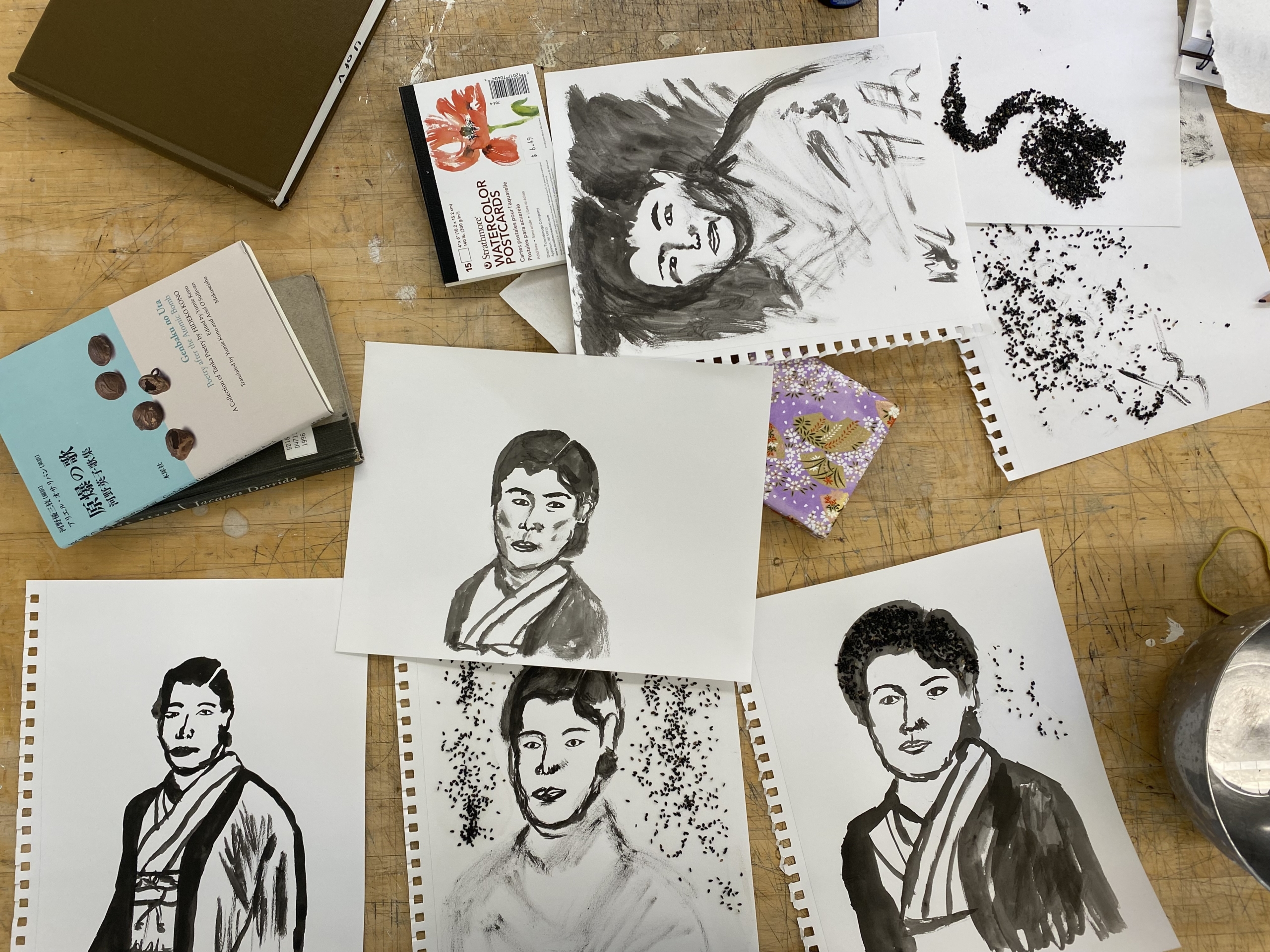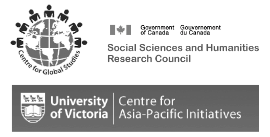Profile: Andrea Mariko Grant

Although primarily a scholar, Andrea joined the PWFC May 2023 residency program as an artist. She applied to work with her grandmother’s Tanka poems (which are written in Japanese). The project began in having them properly translated. Then, she tried “to figure out who [her grandmother] was, as an artist.” One poem likening black sesame seeds to flocks of birds stood out to Andrea, and she decided to use black sesame seeds in her own artistic practice. Andrea tried “throwing them on different things, trying to make little birds.” Then, encouraged by Elysha Rei, another PWFC artist in residence, who suggested buying a sumi-e ink kit, Andrea taught herself the basics and started making very simple sumi-e paintings.

A social anthropologist who received her Ph.D. from Oxford, Andrea paired this artistic exploration of her own with her ongoing research as a postdoctoral fellow with PWFC, which looks “at contemporary Japanese Canadian art and how artists are addressing not only the legacies of uprooting, internment and dispossession but also, just the themes in their work in general.”
This work has marked a shift in her area of research. Andrea’s doctorate focused on youth, popular culture and Pentecostalism in post-genocide Rwanda. The resulting forthcoming book, Youth, Pentecostalism, and Popular Music in Rwanda, looks “at young people’s everyday lives, trying to see how they were addressing the past and the present through popular music and new religious practices.” After finishing at Oxford, Andrea worked as a research fellow and lecturer at the University of Cambridge.
Like many participants in our partnership, Andrea’s first connection with PWFC was through knowledge of Landscapes of Injustice. Wanting to become more familiar with her family history, Andrea saw an opening with the project and applied to be the PWFC post-doctoral fellow and has felt “very lucky to join” our collective. Andrea’s work with PWFC “analyzes contemporary Japanese Canadian art – visual art, dance performance, music, writing.” A large part of this work is meeting with these Japanese Canadian artists which has allowed Andrea to “form a sense of Japanese Canadian community, which I never had growing up, with so many of us dispersed in the East.”
At the end of her residency, Andrea had created postcards with ink paintings of her grandmother with the poem about the sesame seeds written on the back. The finishing touch was to address them to the Custodian of Enemy Property. The project, titled “Archival Additions,” involved “thinking about the gaps, absences, and lack within archives. How archives can never really capture who your ancestors were or the fullness of their lives. A few bureaucratic forms could never show you how my grandmother was this wonderfully creative Tanka poet, painter and artist. And if we just know our ancestors through these archival documents curated by the government, we’re never really going to know them. It’s dehumanizing in many cases. There are exceptions, but it’s not going to be who they truly are.”
The residency afforded Andrea a new context for thinking through Japanese Canadian history, since “everyone comes at history from very different perspectives, so it was fascinating for me to be in the same spaces and sharing things with everyone.” The experience allowed her to learn about Nikkei communities around the globe; working alongside scholars like Monica Okamoto, who joined the residency from Brazil, she could “see some similarities between our experiences and also the differences.” Feeling slightly out of place as an artist when she was usually a scholar, Andrea was grateful that “everyone was so encouraging and kind and that it was a really nice environment.”
This article was written by Kiri H. Powell, from an interview with Andrea Mariko Grant.

 Instagram
Instagram